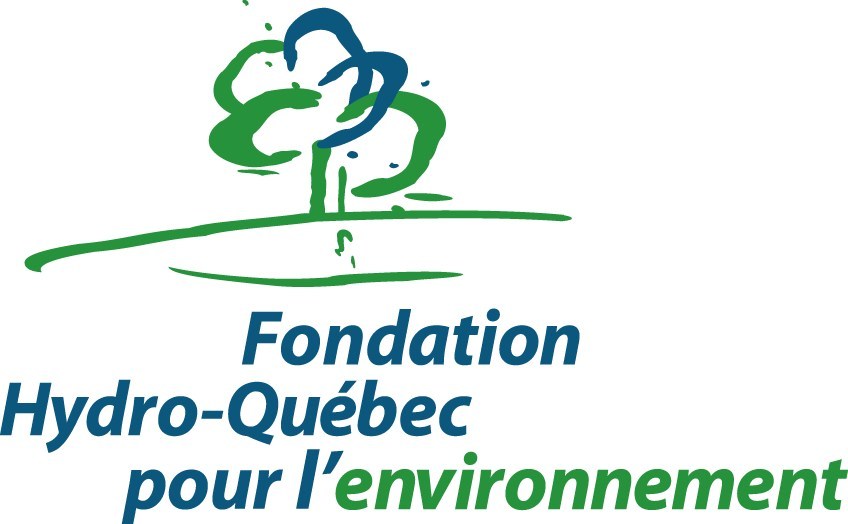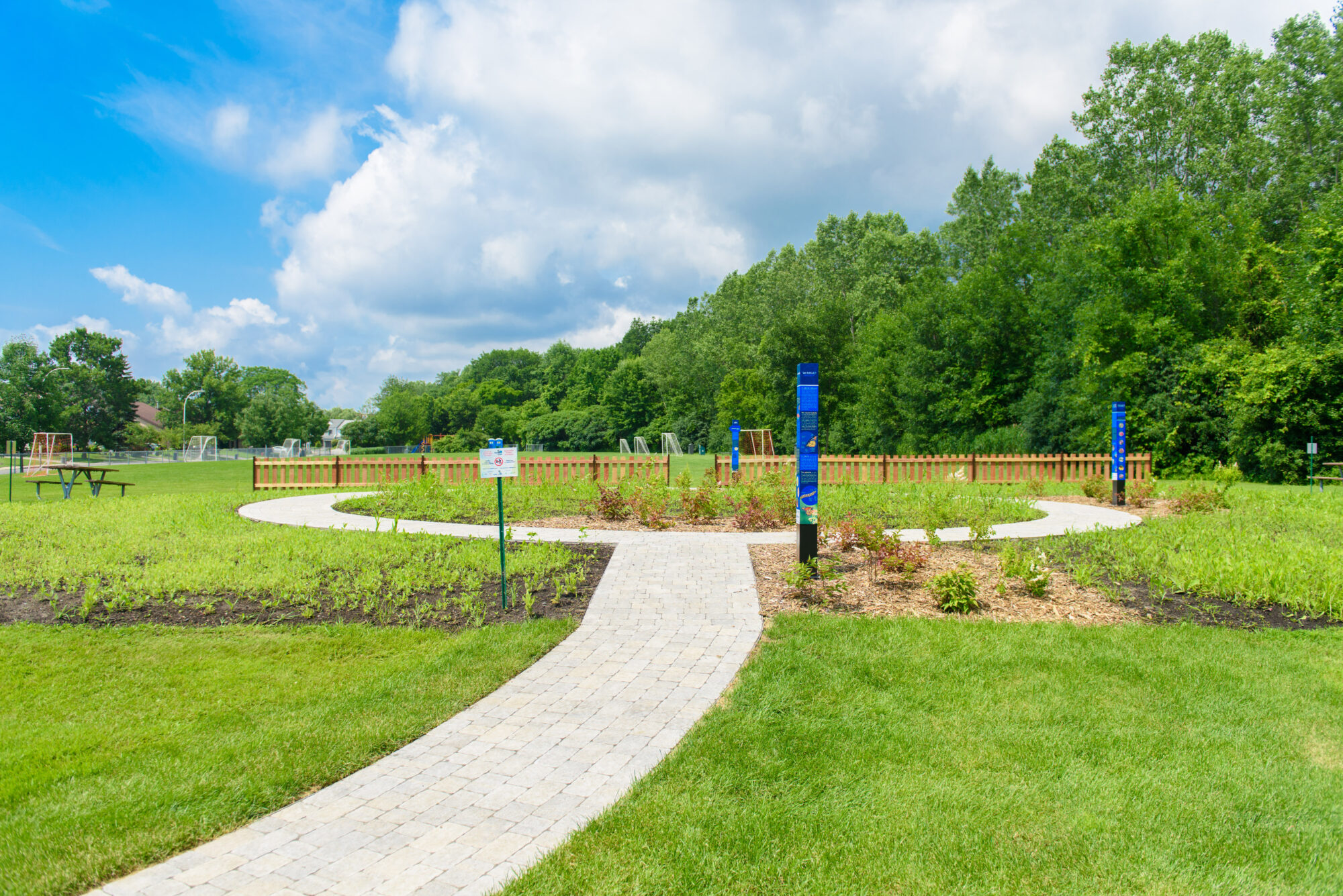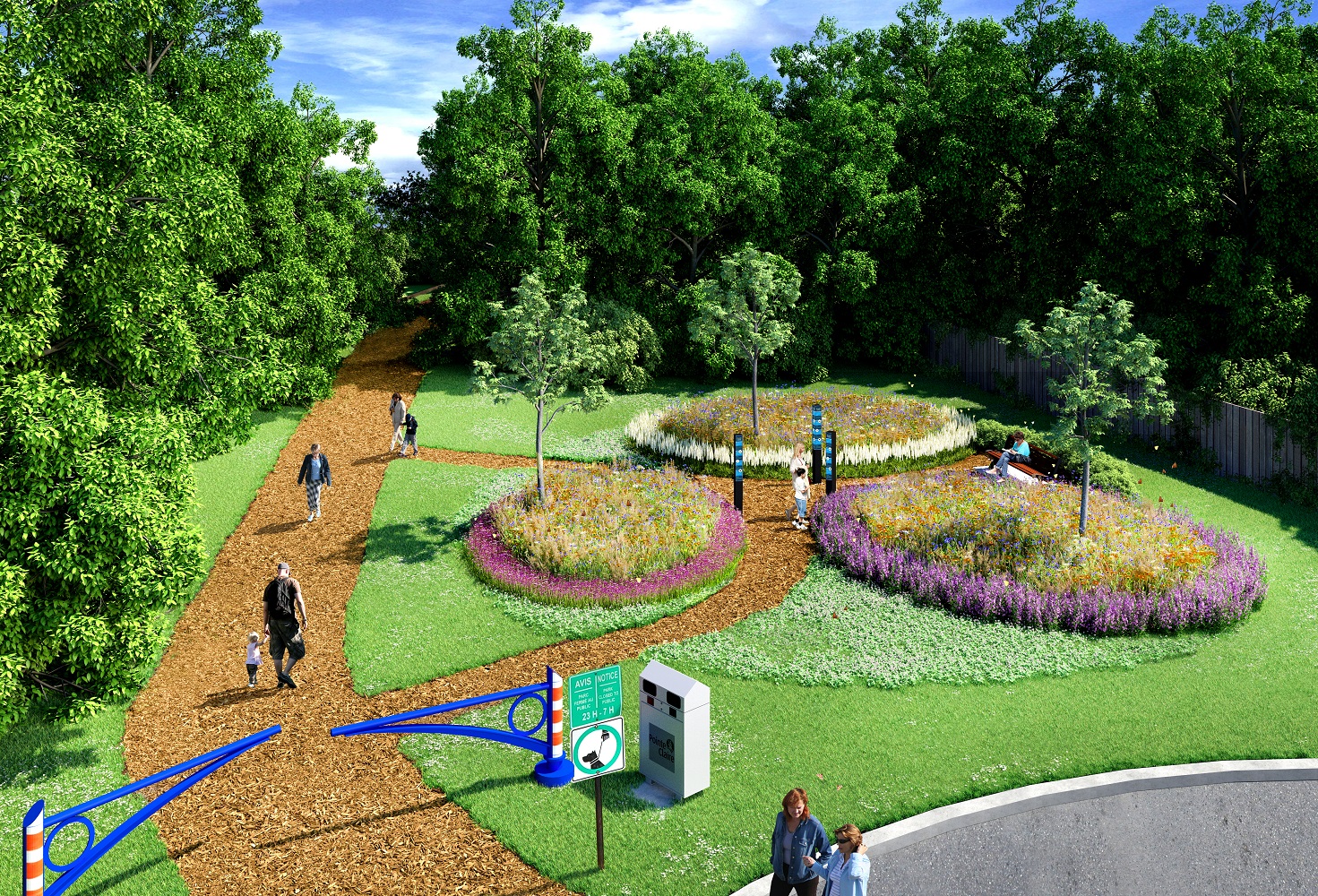Terra-Cotta Natural Park
100 Terra-Cotta Avenue
See map of hiking trails
Terra-Cotta Natural Park is:
- A woodland covering almost 40 hectares;
- 4,4 kilometres of hiking trails and 12 interpretive panels;
- A wide range of ecosystems and plant species;
- A natural habitat for many birds, reptiles and mammals;
- A favourite place for nature lovers and birdwatchers.
Help us preserve the park
- Stay on the marked trails.
- Do not remove any natural feature (animals, plants, wood, stones or rocks, etc.).
- Do not feed the animals.
- Leave waste in bins at park entrances.
- Keep dogs on a leash at all times.
- Put dog excrement in a sealed bag and drop it into one of the bins at park entrances.
Thanks to our partnership with the Fondation Hydro-Québec pour l’environnement, the City has carried out the following projects in Terra-Cotta Natural Park, and the initiatives will continue until the summer of 2018:
- Developing paths by planting 1,060 plants;
- Hosting a planting activity with residents;
- Marking paths by installing signs;
- Cutting and pulling out weeds and dangerous plants;
- Installing two nest boxes for screech owls, two bat houses, and a snake hibernaculum;
- Creating and installing 15 signs on tree stumps;
- Creating and installing five entrance panels, ten interpretive panels, and two interactive panels;
- Hosting an awareness activity at a school.

Soccer field
Terra-Cotta Park has 3 soccer fields, one of which is currently undergoing reconstruction. They all have a synthetic surface that provides a high-quality playing surface and improves safety on the field. In addition, this type of field allows soccer lovers to start their season earlier in the spring, reduces maintenance costs, can withstand more frequent use without damage and is weather resistant, which results in fewer closures due to field conditions. The synthetic surface also allows older players to participate with less fear of injury.
Opening hours
Monday to Friday
9 a.m. to 5 p.m.
Snowshoeing and nordic walk
Paths for snowshoeing are marked over existing trails to offer all users safe access while respecting and protecting plants and wildlife.
This project was made possible thanks to a partnership with Nature-Action Québec and a $5,000 grant from the TD Friends of the Environment Foundation.
In the winter , the stairs are closed because abrasives can’t be used on them. They are harmful to the environment and could affect the park’s vegetation.
Monarch butterfly educational garden
Monarch butterflies – Their role and status
Every spring, monarch butterflies migrate from their wintering grounds in the south to Canada. Monarchs carry pollen wherever they go, allowing plants and flowers to reproduce.
This orange, white, and black butterfly has become iconic in North America. Unfortunately, the habitats that can accommodate them in Canada are declining. Monarch butterfly populations have decreased by 83% between 1994 and 2015. The Committee on the Status of Endangered Wildlife in Canada (COSEWIC) listed it as an endangered species in 2016.
What the City is doing
The City of Pointe-Claire would like to offer monarch butterfly colonies a haven and a healthy breeding ground. A monarch educational garden has been developed at the corner of Belmont and Saddlewood Avenues for this purpose. To encourage all pollinators, a bee educational garden has also been developed at the end of Viburnum Avenue. As you visit the gardens, you will learn more about monarchs, bees, and pollinators through the interpretive panels that have been installed.
The City is committed to raising awareness among residents about the declining monarch population through its annual monarch celebration, where milkweed seeds are distributed. Milkweed is the only source of food for monarch caterpillars. The mayor of Pointe-Claire published a statement to raise awareness about the status of this species.
What you can do
To protect monarch butterflies, you can add milkweed, as well as native and honey plants, in your flower beds to offer butterflies a place to lay their eggs and a source of food.
To encourage the presence and survival of monarchs, your garden should be in a sunny place and sheltered from strong winds. You should also take care of your garden in an eco-friendly manner: choose species that are adapted to the area, use compost to feed your plants, tolerate insects, and avoid using chemical fertilizers.

The garden is made possible with the financial support of the TD Friends of the Environment Foundation.

Bee educational garden
The Viburnum entrance of Terra-Cotta Natural Park now includes a honey plant garden that aims to preserve biodiversity. The garden includes a path, three interpretive panels, and a bench. These plants produce nectar and pollen, playing a vital role for pollinating insects such as bees and monarchs.
Bees in winter
The bees on the rooftop of the Library live in their hive all year round.
In the winter, the bees stay in their hive and gather in a smaller space to retain heat. The hives are also insulated in order to protect the bees from the cold and are visited on a regular basis.
In the spring, when the weather is milder, the insulation will be removed, and the bees will start gathering pollen again.
Estimated projection in 2020:

A little history
Located in the Hochelaga neighbourhood of Montréal, the Montreal Terra Cotta and Lumber Co. was founded in 1888 by the Honourable Alphonse Desjardins. A few years later, a major clay seam was found in Pointe-Claire on land used for agricultural and firewood production. The company acquired the land and began extracting the clay in 1912.
The Honourable Alphonse Desjardins (1841-1912), lawyer, journalist and manufacturer, was a Member of Parliament for 18 years in the House of Commons and a senator. The title Honourable distinguishes him from Alphonse Desjardins, founder of the Caisses populaires Desjardins, who lived during the same period.
1930: Brick making
The clay extracted from the embankment was mixed with sawdust and baked in kilns on site. The final product – a hollow fireproof tile used to build walls and floors – was shipped by train or truck to Ontario and western Canada.
The only manufacturing industry in Pointe-Claire until 1959, Montreal Terra Cotta employed up to 60 people. In 1962, after approximately 700,000 cubic metres of clay had been extracted over half a century, the seam was depleted. The factory closed and the company rehabilitated the site in the following year.
1973: Site conservation
Without further development, the lands attracted speculators. In 1971, a committee made up of John Rennie High School students and local citizens proposed to transform the Montreal Terra Cotta site and the land located just east into a natural park.
The Terra Cotta Conservation Area Project (Pointe-Claire) Inc. was created and studies of the area’s ecological potential were conducted. Citizens mobilized and the City of Pointe-Claire purchased part of the site in 1983 to create a natural park.
2011: Dedicated to nature
Today, there is as little human intervention in the park as possible to foster regeneration and enable the community to experience the area. A conservation agreement protects the site until 2041 and confirms the natural park as a public wooded area of great ecological value for environmentally friendly recreational activities.
Links and downloads
Environment Column:
- Bees in Pointe-Claire
- Monarch Garden Inauguration
- 150 new plants in Terra-Cotta Natural Park
- Exotic Invasive Plant Species: Unwelcome Visitors to Terra-Cotta Natural Park
- Terra-Cotta Natural Park: A wide range of plant life to be discovered
- Nature Day at Terra-Cotta Natural Park and Announcement of CN EcoConnexions Funding
- Earth Day at Terra-Cotta Natural Park
- Terra-Cotta Natural Park
Information
For more information about the Terra-Cotta Natural Park, contact the Public Works Department at 514-630-1230 or tp@pointe-claire.ca
